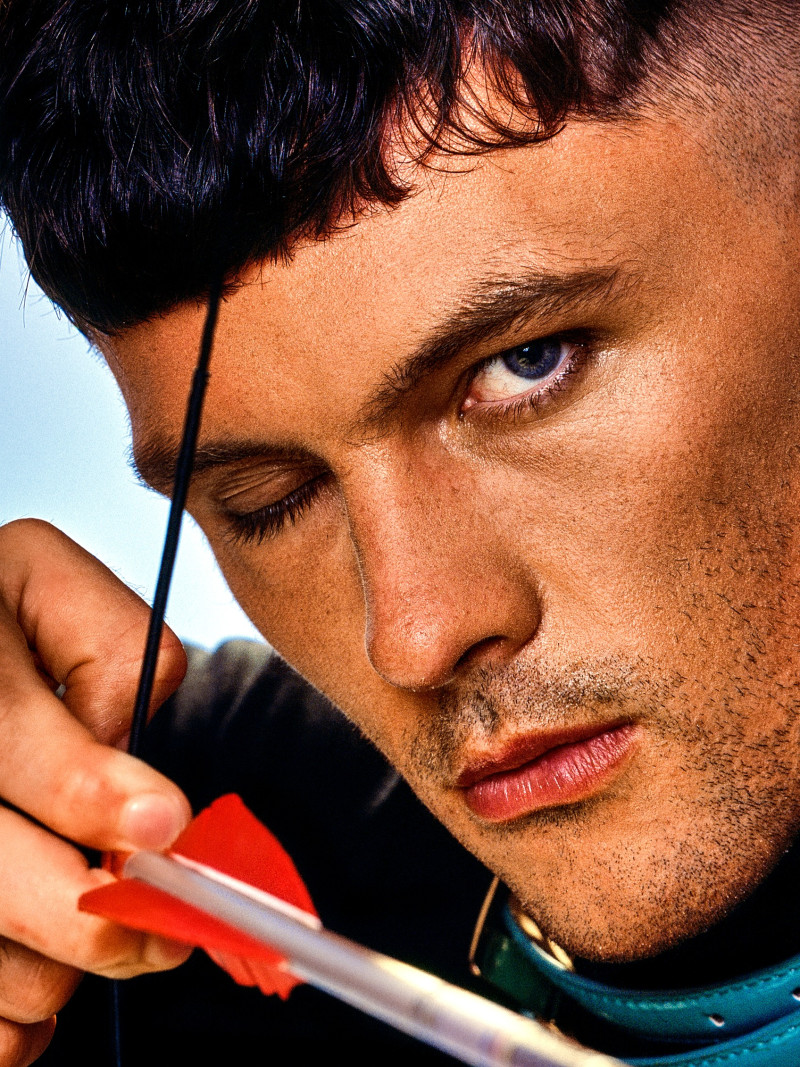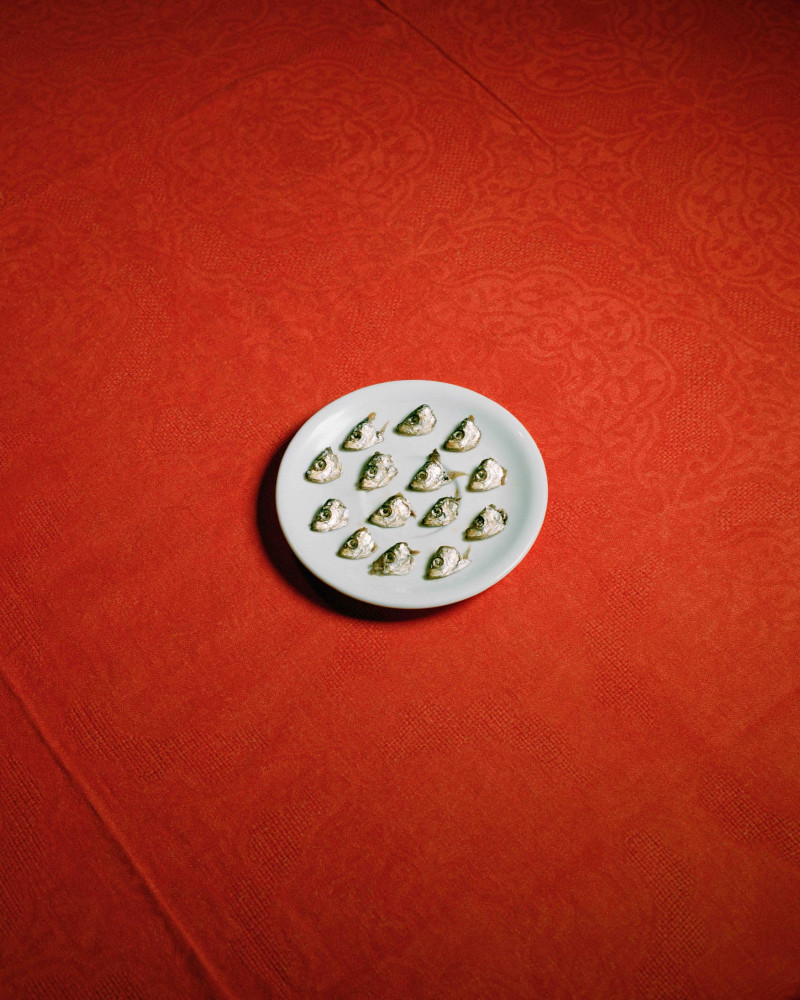The Found Object with Jaci Foti-Lowe
Interview by Nick Smith
Photography by Morgan Hickinbotham
Jaci Foti-Lowe founded Hub Furniture in 2003 and has transformed it in just under fifteen years from a one person operation to a fifty person company that showcases some of the world’s most stunning contemporary furniture, lighting, accessories and artworks. With an emphasis on honest, original and eco-friendly design, Hub has managed to achieve what most furniture stores in Melbourne have failed to do… remain authentic.
After a phenomenally successful exhibition as part of Melbourne Design Week entitled ‘The Found Object’ Jaci Foti-Lowe is opening the roller door to The Watchmaker on Smith Street once again. This time though, it’s empty. But that doesn’t change how excited Jaci is to show off the space. “This is going to be my sisters new gelateria! She’s given me a space on the top floor.” She leads me up a set of stairs and we turn right, revealing a long, naturally lit space with old floorboards and disheveled brick walls. “This is where I’m going to open The Hub General Store.” She says. “After fifteen years of traipsing through flea markets all over the world collecting knick-knacks, I’ve decided to create a place for the everyday object.”

Jaci Foti-Lowe of Hub Furniture
Nick Smith: So Jaci, I wanted to start by asking you about your upbringing. Did you grow up in a creative household?
Jaci Foti-Lowe: My father is an architect and my mum moved between teaching and fashion design. They both ran their own businesses and Dad was always very encouraging of the three of us girls. He’d always tell us “You can do anything you want. The only thing I can give you that no one can ever take away is a good education.” So he educated us really well and we were taught to believe in ourselves and stand up for ourselves. There was a very rich diversity of experience around work ethic, creativity, self belief and design.
NS: So you studied and began working in architecture and urban planning. What was the catalyst for the move away from architecture to running your own furniture store?
JFL: Hub was never meant to be what it is now! My husband Andrew was making tables in the garage of our apartment every Saturday and I remember looking at him one afternoon and thinking that we should put them somewhere so that people could see them. I knew nothing about the furniture industry at all and I’d never worked in retail so it was all completely new but sometimes ignorance really is bliss. In Italy we met Patrizia Moroso and Patricia Urquiola who are both quite powerful women with energy, commitment and belief in what they do so armed with my background and an opportunity that kept presenting itself, each turn opened it up further. It didn’t seem like such a large jump from what I was doing.
NS: It felt quite organic?
JFL: Yes it felt really organic, and what you don’t know, you don’t know, so you just do it.
NS: That’s great. Can you tell me a little bit about your connection to collecting and how that started for you?
JFL: I’ve always done it. I think it’s in your DNA and if you do it, you get it, and if you don’t do it you just don’t get it. There’s beauty in everything and that’s the thing I struggle to walk away from. If I go into a flea market or a second hand store it’s almost like a… not a nervousness… but an anxiousness about needing to have a particular object. You don’t know where it’s going to end up if you don’t take it with you. So much these days is plastic and disposable, so all of these forgotten objects are appealing to me because they capture a moment in time and are loaded with stories. They’re not necessarily beautiful to everyone else, but they’re beautiful to me.
NS: I find peoples notions of beauty quite interesting. Most people really struggle to actually explain why they find something beautiful.
JFL: I know I definitely tend to like things that have a sense of utility to them. I love to imagine how someone might have used a vice or a clasp or a hook. Often historically the way our ancestors did things were so simple and yet over time we’ve tried to make everything so complicated. I don’t have a mechanical can opener at home and it drives everyone insane but I have this beautiful manual butterfly can opener where you cut the tin open by hand. Old school. I love it.
NS: Yeah my mum still has one of those. I remember it.
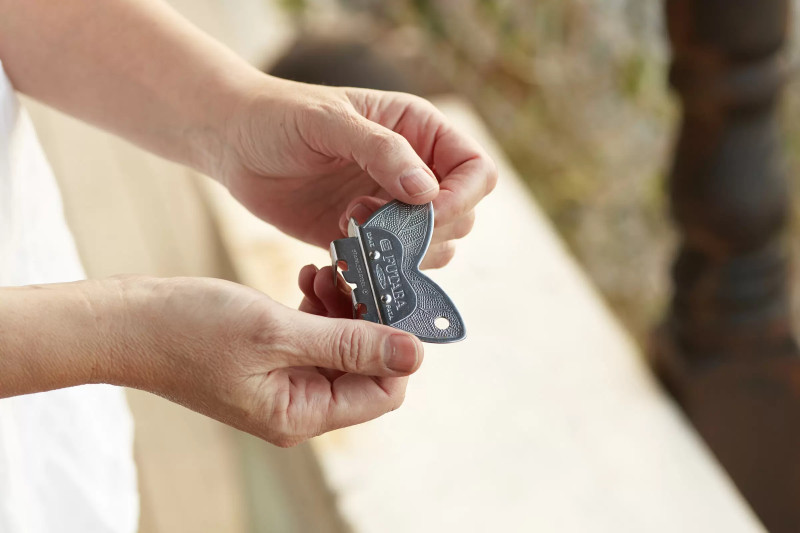
JFL: You have to physically twist the hand and it’s your action that cuts it open. Yes it may jagged and yes it’s slower, but it’s the slowing down that I love. There’s something beautiful about tools that force you to slow down, so I’m often collecting those things.
NS: Do these objects become a part of your life? Do you make sure the things you collect are utilised in your daily life?
JFL: Oh definitely. I found this old lock which is huge, old and clunky and has been hanging on the bathroom door handle for three years. The key has become a hook for towels or clothes. When I needed to find a spot to hang a toilet training seat for our littlest one, Jessie, I took the lock off the door and put it onto a long brass towel rail we have and used the key to hang her little seat. Everything just moves around your life not necessarily being used for what it was intended for but instead being reappropriated in other ways which means you don’t have to go to Bunnings and buy some cheap plastic hook to hang something up.
NS: I wish the rest of the world did that more often. Maybe we wouldn’t have so much crap everywhere.
JFL: It’s so problematic. If you don’t stop and think about it you’ll just keep going to Bunnings or Target. I’ve recently heard that denim jeans are really bad for the environment. They get washed and the dye runs into river systems. I had no idea and I think a big part of the problem is that people just don’t know.
NS: Yeah. There’s not enough information about what’s in products, what they’re made of or how they’re made, which at the end of the day leads to a society that stops caring.
JFL: It’s harder to care. It’s an effort. Far easier just to go and buy twenty dollar jeans.
NS: Do you think more people are beginning to demand more information about the products they’re buying?
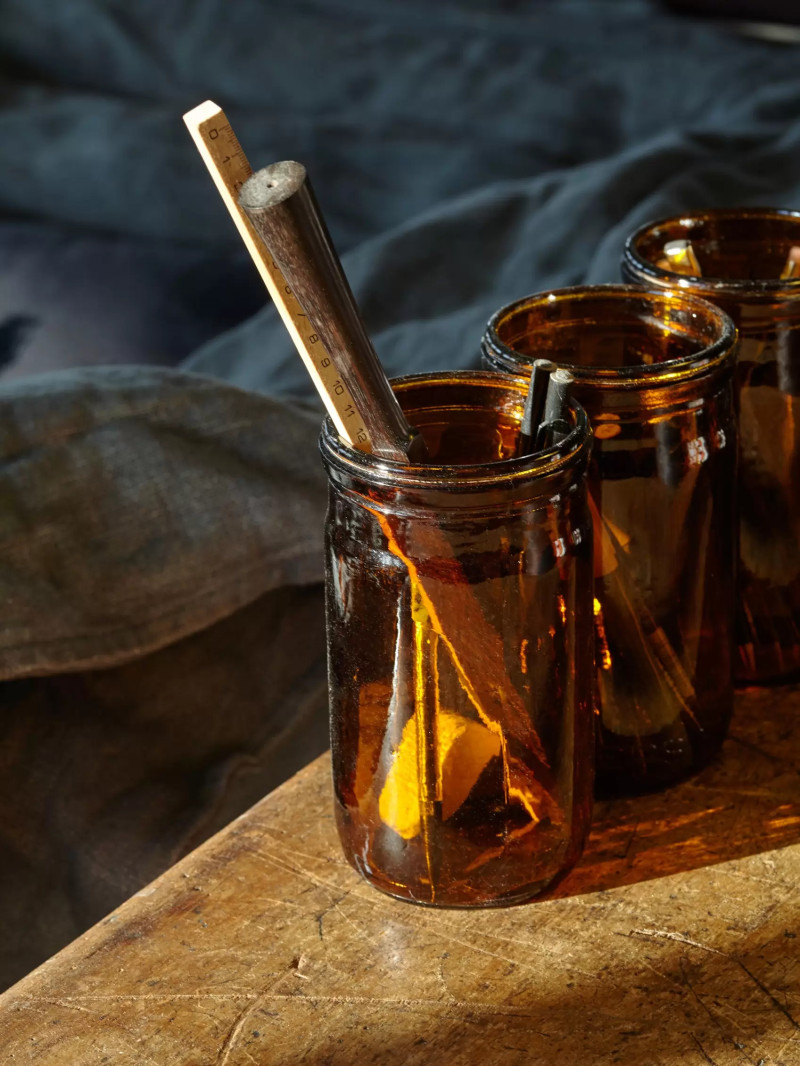
A rich history of stains, marks and imperfections. One of Andrew's early tables
JFL: Absolutely. And people are concerned about the longevity of the things they’re buying too. One of the reasons I’m happy with the work I do is because I spend a lot of time researching where the pieces are produced and I know the quality is built into what we sell. I’ve visited a lot of the places where our products are made and I know they’re going to last for a long time. They’re not a two year purchase. They’re a twenty five, thirty five or forty five year purchase. I bring that idea home too. I have three pairs of scissors in the house and they’re the best scissors I could buy. I know I won’t ever have to buy cheap plastic Officeworks scissors wrapped in paper and plastic ten times over. As long as I buy well, I can buy once and if I look after them they’ll last forever. I’m teaching the children that too. It’s about good quality choices and filtering that idea into your everyday purchases.
NS: There’s a Japanese folklore about objects that have reached one hundred years old gaining self-awareness and coming to life. I love the idea that they are celebrated, not just because the object made it to one hundred years old, but because the owners throughout its lifetime have looked after it and given it the care it needed.
JFL: There’s a beauty that well made objects get as they age. We have an Italian marble brand at Hub called Marsotto who are a two hundred year old family company. We were talking about marble table tops one day and I asked them: “What do you say when somebody worries that the marble is going to mark?” They looked almost shocked and said, “Every stain and chip is the story of your family.” I understood what they meant immediately. Don’t lament the chips, remember how they came to be there, what happened and when. They’re a beautiful part of the story of the table. These tables are solid marble and can exist inside for twenty years and then move into the garden for forty five years and then be brought back inside and at each stage of their life they will age and patina beautifully. They become more precious, not less precious because they’re marked or damaged. The imperfections you create are what make them uniquely yours.
NS: That’s really nice. Can you tell me a little bit about your recent explorations into exhibitions and curation? Is it something you see yourself doing more of in the future?
JFL: When I first opened Hub I had these ideas about what we were going to able to achieve and it’s taken me fourteen years to breathe life into some them. I have a really incredible team of loyal, long term staff who have ridden through the highs and lows with me and it has allowed us the breathing space we needed to start focusing on some of these extra curricular activities. They’ve carried the burden with me and now that we’ve been able to employ a few more people to support I’ve been able to spread my wings a little. It’s incredible how successful the exhibitions have been. We had the Bruce Rowe exhibition, the recent David Umomoto show and coming up we’ve got Phillip Low from New York for which we’ve just received the pieces.
(Jaci looks visibly elated)
NS: You sound excited.
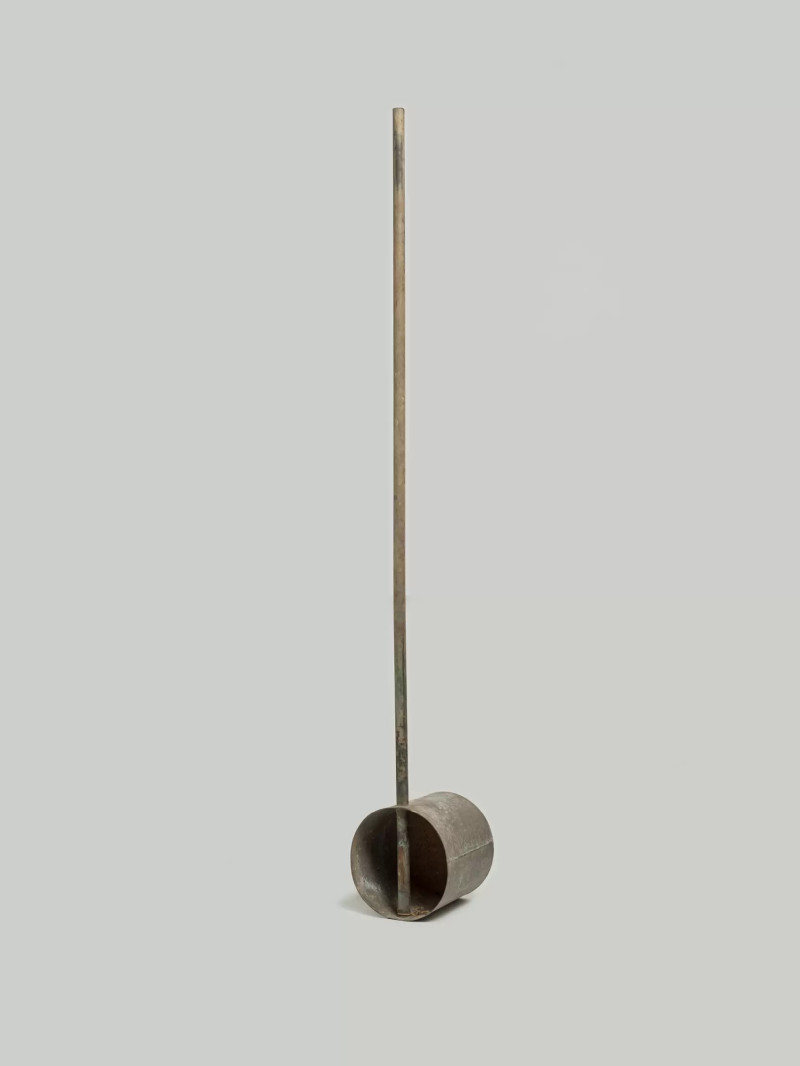
Bucket on a pole. A piece from Jaci’s personal collection as part of ‘The Found Object’ exhibition that took place in March, 2017
JFL: Oh my god! They’re hauntingly captivating. There is no other way to describe them. The refraction of light in these objects… I’m so excited, I cannot wait! We also have Stephen Ormandy, an artist based in Sydney who is one half of Dinosaur Designs, and this morning I spent a few hours at the home of sculptor Simon Perry who has agreed to open up a body of bronze works he’s created over the last twenty years. These exhibitions we’re doing are creating their own momentum because they’re something that comes from the heart. There’s a passion and reason behind it. 'The Found Object' exhibition came about from being a collector and seeing other people doing it too. The response was overwhelmingly positive not because it was precious or overly curated but because it was a genuinely personal expression of something that had merit. It’s a common habit amongst a lot of creative people and it was beautiful to see how their creativity has been influenced by the things that they gather. I would’ve broken into that exhibition and stolen half of the stuff that was in there.
NS: You have three young children is that right?
JFL: Yep, three bright, beautiful children, five horses and two dogs!
NS: How do you achieve a stable work-life balance considering you have so many projects constantly on the go?
JFL: Well I haven’t always achieved a good balance. I work very hard and believe there’s no way to get anywhere without that hard work. When we had Finley and Elliot – the twins – I didn’t take a break. It just added to the effort required to get things done. The business went through pretty low moments which is emotionally draining and demands a type of conviction that little else in life prepares you for. With growth, some things become easier, other things, much harder. A couple of months ago I nearly ground to a halt though. I had stopped sleeping and was working between two and five in the morning. A friend called me on it…
NS: You were burning out?
JFL: Sadly I was but I didn’t see it. I just kept pushing through but I wasn’t myself and wasn’t being effective. Against my instincts, I headed north to a health retreat called Gwinganna and honestly, it was exactly what I needed. I was getting up early, going to bed early, eating well, doing exercise and there was no mobile phone coverage. It was a complete circuit breaker and it’s changed the way I think. There are some structural changes we’ve made to our life that have improved it tenfold. The break has helped me to slow down and assess where we’re going as a company and where I’m going personally and to realign the course a bit. Honestly, getting agood nights sleep – I know it sounds so obvious – has been the key to the greatest shift in my outlook and my capacity to work and parent effectively.
NS: Everyone is so busy these days so it’s hard to find time to reflect and assess your life, but it’s important.
JFL: These days busy has almost become a state of normality. It’s worn like a badge of honour. One day I’d love to say to someone, “No… I’m not doing anything, I’ve really got nothing on.” When I’ve achieved that, then I’ll feel truly successful.
NS: The horses seem to be a big part of your life. I saw you were featured in Equestrian Life magazine or something.
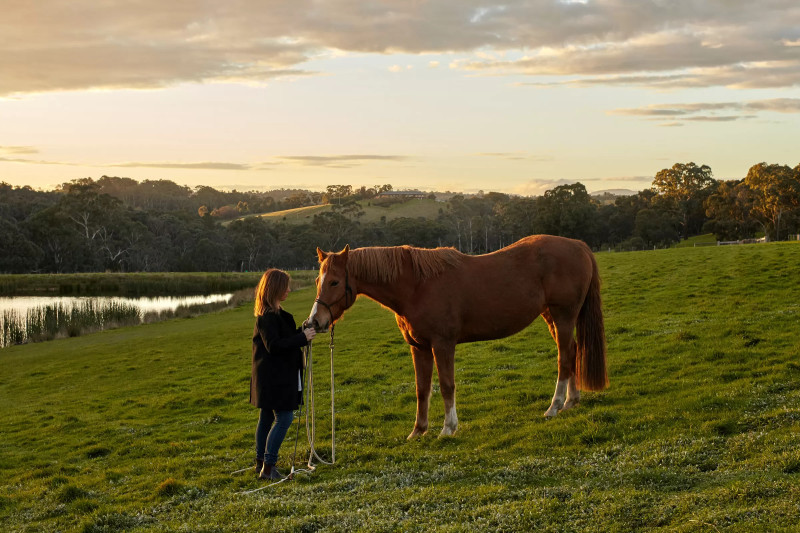
JFL: Yeah that’s right. (Laughs) I’ve had a strong connection to horses since I was quite little and it was always a life goal to have them. I’ve loved learning how sensitive and responsive horses are to your energy. In learning to speak their language you can work with them in a very natural way. I’ve had to learn how to lower my energy level, how to focus and how to communicate clearly and honestly, without drama but with intent. To be challenged in that way has been very rewarding. It’s so calming and satisfying to go out into the paddock, stand amongst a herd of horses and have them nuzzle up against you in the cold of the morning. Having a half tonne animal come over and breathe quietly in your ear… so gently… there’s nothing quite like that relationship.
NS: When did you get them?
JFL: True to form I got the horses when we had the twins and I’ve had them for about eight years now. We have five now and the children have small ponies so they’re learning to ride and getting all the benefits from being around horses. When you’re with a horse you have to pay attention and there’s not a lot of room for distraction or error because you can easily get hurt. You have a responsibility, so it’s an interesting way to teach children.
NS: It sounds like a great learning experience for them.
JFL: Yeah it is a great learning experience and they don’t even realise it. They just learn through play and experience so it’s really effective.
NS: Yeah, where is Kangaroo Ground exactly? I haven’t heard of it before.
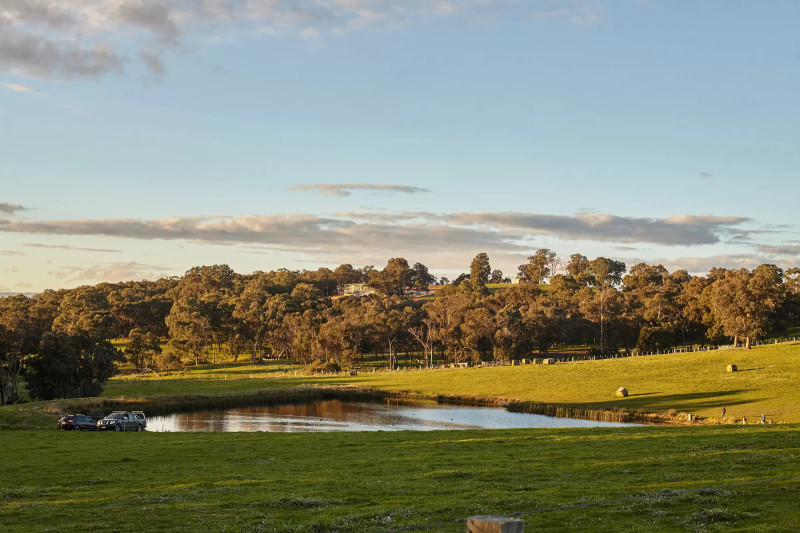
Jaci’s property in Kangaroo Ground
JFL: It’s at the head of the Yarra Valley. We get a lot of people driving through from Eltham and then into the Yarra Valley through Yarra Glen. It’s a superb place, only an hour from Melbourne. With the boys getting older, we really wanted to unplug them from the city and allow them to be outside running around.
NS: I love the idea of creating a bit of distance from the city. It can be quite chaotic sometimes.
JFL: I love the city. The food, cafés and culture are great and you can tap into all of that but to be able to really grow food on your own property… not token herbs and a couple of vegetables, but real food. We’ve got six huge garden beds, a stone fruit orchard, a citrus orchard, one of the largest dams in the area stocked with trout and the chickens are next.
NS: Can we talk a bit about the Hub General Store? How did the concept come about initially?
JFL: Well I’ve always wanted to increase our offering and whilst at Hub we have beautiful accessories, objects, furniture and lighting, I’ve always had this desire to bring together the day to day things that we talked about earlier. Great scissors or great can openers, just great day to day tools. The mundane but beautifully designed things that we use every day. The opportunity to do The General Store has really come about thanks to my sister Sandra who has given over the top floor of the building where she is opening her second Piccolina. I’ve got so many things from fifteen years of scouring flea markets so I thought it was time to share some of them and see them go beyond me. The day to day and found object havecome together in that great quintessential Australian idea of the country general store. There’s not a lot of choice but you know you’ll find one of everything you need. We stop by the Kangaroo Ground General Store most days a week for a little bit of whatever we need. They’ve got everything. The Hub General Store will be tucked away up above Piccolina so it will take some effort to find us but I like that. It will be something that the locals will discover and then maybe it will grow from word of mouth. That’s what I’m hoping anyway… We’ll see!
NS: It sounds great. So, Jaci, I was wondering what makes you happy?
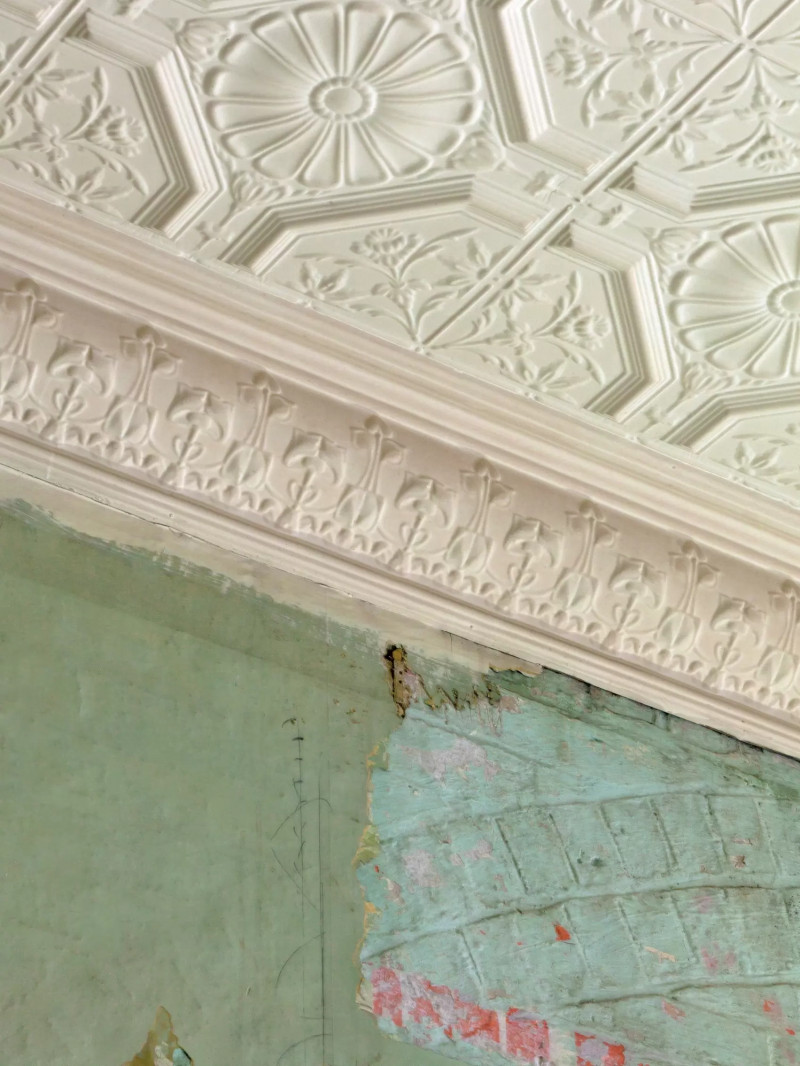
Detail from the future site of The General Store launching late 2017
JFL: That’s a very hard question to answer. I guess the quiet moments with my children make me supremely happy. I got up at five-thirty the other morning and the twins came out one by one at around six thirty. It was dark and the fire was stoked. I popped some bean bags in front of the wood heater and had the lemon and honey tea brewing. I popped them under a blanket and it was still dark inside so I grabbed a torch and read to them. We just sat together and the morning started that way. It made me feel supremely blessed that you can create these moments and they’re yours. I think the nicest thing in our culture is the ability to be rich in so many areas. I’ve got a beautiful family, an incredible house and land. I can live an hour from the city and have horses. I can have a business that’s thriving and get to work with people that I love and have been with me through thick and thin. The relationships you create and the loyalty of these people is sometimes overwhelming. Sometimes, on the way to school we play a game called The Grateful Game. We take turns around the car and everyone says something they’re grateful for. To hear one of my children say, “I’m really grateful for my brother and my best friends” is so beautiful. Those moments are where you find true joy. You cant buy them. They’re nurtured over years and they pop up to surprise you. I imagine when I’m eighty – sitting somewhere quietly – I’m not going to have fancy furniture to keep me comfortable, warm and loved. My happiness will come from all these relationships that I’ve nurtured over the years. I think protecting that is… I think I’m going to cry… is the most important thing you can do.
NS: That’s so beautiful. Thank you Jaci.
JFL: I’m getting shivers… but I mean it.
NS: It’s authentic.
JFL: I’m glad you appreciate it. A little window into the soul…
NS: Thank you so much for speaking with me.
JFL: That’s alright, thanks Nick.
Milieu worked with Hub Furniture for the Campbell Street Open Home event in June 2017. To stay connected with Melbourne Milieu of for information about up-coming Open Home events please follow us on Instagram.
